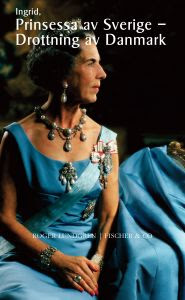
One may wonder what might be the purpose of yet another book on Queen Victoria and Prince Albert of Britain. One reason for writing one might be that one had found new material; another that one believed oneself capable of telling the story from a new angle and thereby reaching a new understanding. The latter seems to be the American author Gillian Gill’s incentive for writing
We Two: Victoria and Albert: Rulers, Partners, Rivals, published by Ballantine Books of New York last spring and soon out in paperback.
Gill’s main focus is the relations between human beings. Queen Victoria’s and Prince Albert’s marriage was not the romanticised thing often portrayed, but “an extraordinary feat achieved against the odds”, Gill writes. She argues that “their marriage was always a work in progress, not a fait accompli, a drama not a pageant. Theirs was a business partnership as well as a marriage, and they engaged in an impassioned, weirdly public contest over who was the senior partner”.
This is an interesting approach, yet Gills somehow downplays how stormy the marriage in fact was and how Queen Victoria, particularly in later years, often tormented her husband. A closer look at this might have added to our understanding of the Queen’s excessive grief and her idolisation of her husband after his death – a grief to which it seems a certain amount of regret and perhaps sense of guilt was added.
The book is very well written, it is clear that the author is very familiar with her theme and the way she describes the interaction between the Queen and the Prince Consort is interesting. Yet it is a paradox that the best part of the book is the first, titled “The Years Alone”, where she explores the respective backgrounds and upbringings of Victoria and Albert.
Gill seems particularly taken with the tale of the young Victoria and how she, after an unhappy and constrained childhood, at the time of her accession at the age of 18 emerged as a monarch who “understood the business of monarchy better than any of her male ancestors”. In contrast, she argues, Prince Albert was “just an overprotected youth fatally confident of his abilities to rule a kingdom”. To me this seems a bit over the top. As Gill also acknowledges, Queen Victoria was during the first years of her reign closely aligned with one political party and at odds with the other and she put her feet wrong on a number of occasions. It cannot be denied that Prince Albert’s understanding of constitutional monarchy was superior to hers and that his influence on her in that respect was very significant.
The book’s focus on the personal relations means that Victoria’s and Albert’s, and particularly the Prince Consort’s, achievements on the public stage get somewhat lost. It is also obvious that Gillian Gill is more at home when it comes to personal relationships than less domestic historical and political events. This shows both through a number of gross factual mistakes, such as when she ascribes the Brumaire coup to Napoléon III, and through her according individuals too much influence on history.
A notable example of the latter is when she writes that if Prince Albert had lived a year longer he might have persuaded Crown Prince Friedrich of Prussia not to talk his father out of abdicating. If so, Friedrich’s wife, the eldest daughter of Queen Victoria and Prince Albert, would have become Queen of Prussia in 1862 and Gill tells us: “It is not absurd to argue that, had the prince consort lived even one more year, had his daughter Vicky had a chance to dictate Crown policy and shape society in Prussia, there might not have been a First World War”. This is not only absurd but utter nonsense. Firstly, history shows that Prussian queens consort had very little chance to influence society or dictate policy. Secondly, the reasons for World War I were so complex that no single person would have been able to prevent it no matter the strength of her character.
The author has a slight bias towards Queen Victoria at the expense of Prince Albert and occasionally seems to be a little chauvinistic on behalf of her own sex towards men in general. Nevertheless she is mostly, although not always, quite fair towards both her two subjects. One notable exception is when she persists in arguing that Queen Victoria following her husband’s death rather enjoyed playing what she calls “the tragedy queen”. One might agree with Gill that the way Queen Victoria expressed her grief through four decades might have been a little over the top, yet it seems obvious that her grief was genuine and that she did not view Prince Albert’s death as her own victory in their struggle for power.
It should be added that the book’s design (by Barbara Bachman) is very good.
When it comes to the literature about Queen Victoria and Prince Albert it may be added as a postscript that the upcoming exhibition “
Victoria & Albert: Art & Love” at the Queen’s Gallery in London will be accompanied by a catalogue running to 430 pages, edited by Jonathan Marsden.
 I recently wrote about some of the royalty-related books expected in 2010 and here are some additions to that list.
I recently wrote about some of the royalty-related books expected in 2010 and here are some additions to that list.












